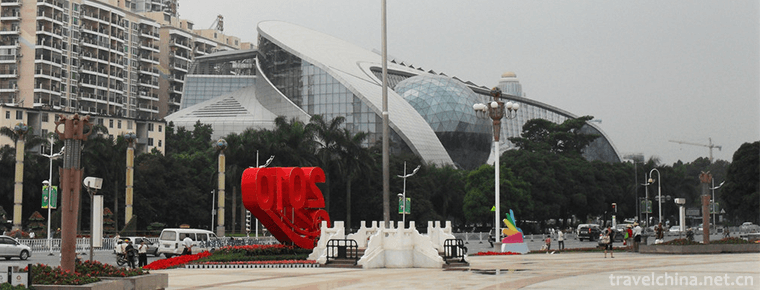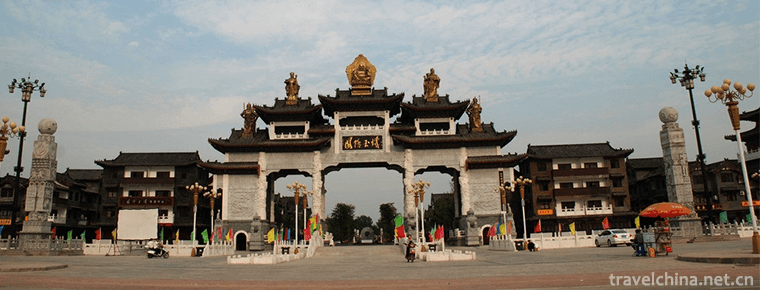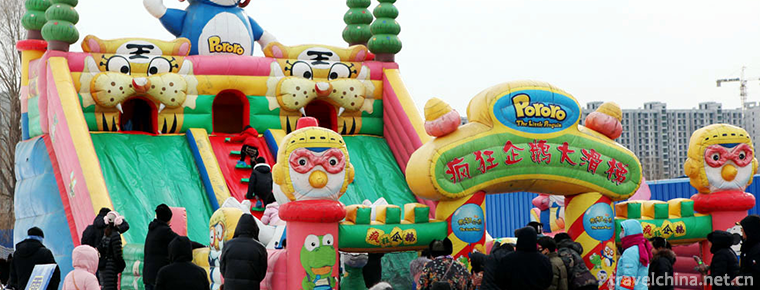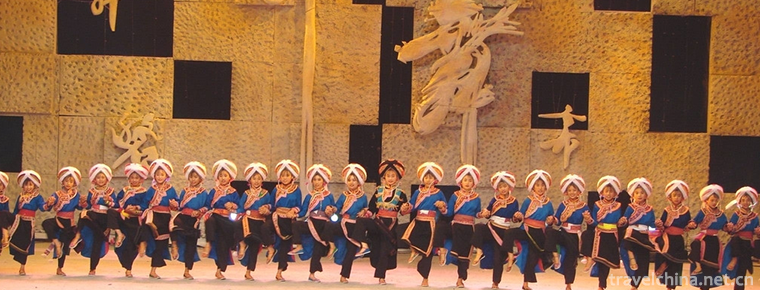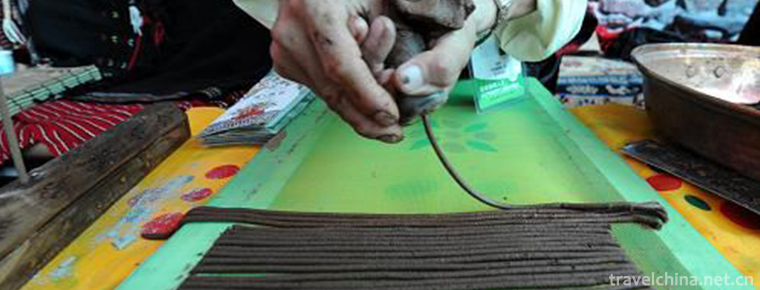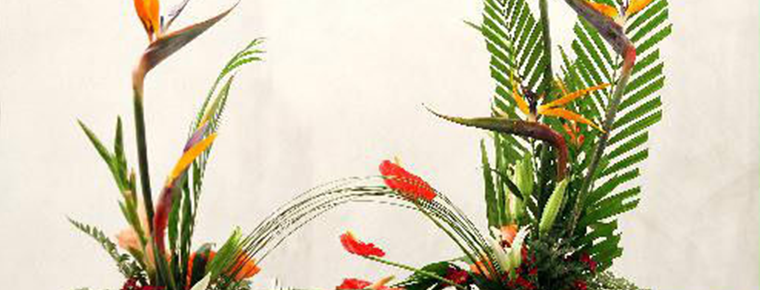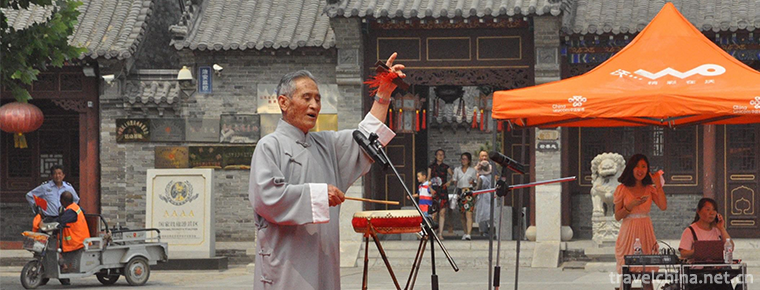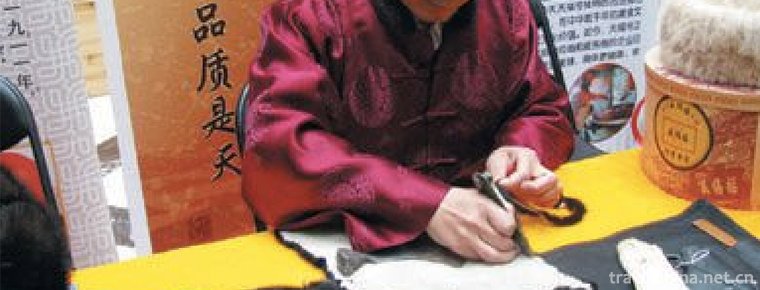Li Zhuang ancient town
Li Zhuang ancient town
Lizhuang, an ancient town precipitated by cultural and historical relics, is an ancient town that tells stories and vicissitudes of the Anti-Japanese War. It is an ancient town that reflects Chinese traditional culture and maintains the spirit of the Chinese nation. Lizhuang Ancient Town is located on the South Bank of the Yangtze River in the eastern suburb of Yibin City, Sichuan Province, known as "the first ancient town of the Yangtze River in Wanli". Lizhuang, a thousand-year-old town on the edge of the Yangtze River, has a history of 1460 years. It multiplies and lives along the Yangtze River, forming a natural landscape of "Minshan, Chuze, Fengpai Guiling, Xiuliuxianyuan". The climate here is pleasant, the terrain is flat, the land and water transportation is convenient, the history is long, the humanistic landscape is gathered together, less commercial atmosphere, more simple humanistic atmosphere.
geographical position
Lizhuang is a famous historical and cultural town at the national level. It is located in Lizhuangba on the South Bank of the Yangtze River, 19 kilometers away from the outskirts of Yibin. It was a fishing village in ancient times, and a post station was set up in the Han Dynasty. Because it was near the Yangtze River, it was a place for water transportation and trade in the Ming and Qing Dynasties. There are many cultural relics and historic sites in Lizhuang ancient town, with a large scale of ancient buildings and a rigorous layout, which fully reflects the characteristics of the folk houses, temples, palaces and other buildings in southern Sichuan during the Ming and Qing Dynasties. The town's wine shops, tea houses, shops, bustling. The structure and style of ancient towns in Ming and Qing Dynasties are still preserved. The stone streets are mostly built in Qing Dynasty. The wind volcanic walls are high, and the carved doors and windows are ancient. There are deep alleys between the courtyards. Linjiang wharf, with stepped stone slabs overlapping, leading to the main street, has a strong local ethnic characteristics of southern Sichuan. The wood carvings and stone carvings in ancient buildings are exquisite and lifelike, and have high artistic appreciation value. There are Zhouzhuang in Kunshan of Jiangsu Province in the East and Lizhuang in Yibin of Sichuan Province in the west. Zhouzhuang is characterized by "spring rain apricot blossoms in the south of the Yangtze River, small bridges in the water countryside". Lizhuang's characteristic is that it has made great achievements in inheriting culture, and its craftsmanship is absolutely amazing.
Historical culture
Three thousand years ago, Li Zhuang was a place where people lived together. According to the records, during the Spring and Autumn Period and the Warring States Period, Lizhuang was the inhabitant of ancient Bo people. It is said that it was the inhabitant of brother Li who lived fishing in the Yangtze River and was named after "Lizhuang", "Lijiacun" and "Lizhuangba". From the sixth year of Datong in Liang Dynasty (540 AD), Nanguang County and Liutong County were set up in Lizhuang. In the Sui Dynasty, because of avoiding the name of Yang Guang, Emperor Yangdi of the Sui Dynasty, Nanguang County was changed to Nanxi County. In the middle of Tang Dynasty, Rongzhou (now Yibin City) government moved to Lizhuang twice. In the early Northern Song Dynasty, Nanxi County Zhicai moved from Lizhuang to Xianyuan Dam, where Nanxi County is located today. Since the Ming Dynasty, Lizhuang Town has become an important wharf and material distribution center in the upper reaches of the Yangtze River. Daoguang has been the largest town in Nanxi County since the Qing Dynasty.
In 1992, it was named "a famous historical and cultural town in Sichuan Province", and in 1995 it was listed as a pilot town for the construction of small towns at the national and provincial levels. The town has temples, palaces, terraces, ancient theatre buildings, ancient streets and ancient folk houses that reflect the architectural characteristics of the Ming and Qing Dynasties; Huiguang Temple, Jade Buddha Temple, Nanhua Palace, Wenchang Palace, Dongyue Temple and other "Nine Palaces and Eighteen Temples" with high ancient cultural appreciation value;
There is a "Rotary Hall" which is called "excellent beam-column structure and quite proud of the current works" by the architect Mr. Liang Sicheng, together with "Kuixing Pavilion", "Hundred Crane Window" and "Jiulong Monument" can be regarded as the four wonders of ancient town. There are many cultural relics and historic sites in Lizhuang, and there are many cultural landscapes. The well-preserved monuments are Huiguang Temple, Dongyue Temple and Rotary Hall in the Ming Dynasty, Yuwang Palace, Dongjan Temple, Nanhua Palace, Heaven Palace, Ancestral Palace, Wenchang Palace, Huiguang Temple, Zhangjia Temple, Luojia Temple, Four Family Court and Xiaojiayuan Residence in the Qing Dynasty. The large scale and rigorous layout of the ancient buildings embody the architectural characteristics of temples and palaces in southern Sichuan during the Ming and Qing Dynasties. Wood carvings and stone carvings have fine workmanship, vivid images and high artistic appreciation value.
Lizhuang was also one of the cultural centers in the rear area during the Anti-Japanese War. In 1939, since the 16-character message "Welcome to Tongda Qianchuan and Lizhuang, All Needs and Local Supply", more than ten institutions of higher learning and scientific research institutes, such as Tongji University, Jinling University, Central Academy of Sciences, China Construction Society and so on, relocated to Lizhuang during the Anti-Japanese War, with well-known experts and institutes nationwide. Scholars such as Li Ji, Fu Sinian, Tao Menghe, Wu Dingliang, Liang Sicheng, Lin Huiyin, Tong Dizhou, Liang Siyong, and Laogan have gathered in Lizhuang for six years. Liang Sicheng's "History of Chinese Architecture" was born in Lizhuang. Li Zhuang became famous as the cultural center of the Anti-Japanese War. It was not until 1947, after the victory of the War of Resistance, that they moved back to their original places. This has had a far-reaching impact on Li Zhuang's society, economy and culture. It is no exaggeration to say that Lizhuang is a place of national spirit, a refraction point of traditional culture, a place of Zhouzhuang in the East and a place of Lizhuang in the west.
You can visit the ancient town of Lizhuang, taste the white meat of Lizhuang, burn the grass dragon of Lizhuang, enjoy the sunset of Sanjiang River, watch the traditional dragon boat, Yangko, waist drum, Niu Erdeng, Sichuan Opera folk performances, and find the four wonders of the ancient town: Quexing Dou, Rotary Ancient Hall, White Crane Qi Window, Jiulong Stone Monument, which makes people linger. Li Zhuang can let patriotic people appreciate the Anti-Japanese War culture, people who like architecture style appreciate the folk houses and ancient architecture culture in South Sichuan, people who seek roots and ancestors appreciate Hakka culture, people in Hutu (or pious) appreciate religious culture, people who are greedy and delicious can appreciate the golden tourist line of CCTV, Sichuan TV, Hong Kong Phoenix. Television stations and others have come here to shoot the documentary "The First Town of the Yangtze River in Wanli".
Major attractions
Zhangjiaci
The Zhangjia Temple in the west of Lizhuang Town covers an area of nearly 4000 square meters. It was a large house purchased by Zhang clan, headed by Zhang Shide, in the nineteenth year of Qing Daoguang (1840 A.D.), with 660 silver coins, to express the love and respect for ancestors of Zhang clan's descendants and to serve as a special place for retrieving the fundamental ancestral temple.
The main body of this ancestral temple is a QUADRANGLE-STYLE wooden structure building, with the upper hall as the main temple and the lower hall as the hall. The 50 windows and doors in the hall are unique. Each one is carved with high-quality Nanmu Seiko 2 cranes, 50 windows a total of 100 cranes, different shapes, lifelike, surrounded by flowing clouds, so-called "Baihe Xiangyun" window. According to Li Zhuang's "Zhang's genealogy", each window in this ancestral hall of Zhang's family costs 14 or 2 stripes of silver, which is equivalent to the monthly salary of a genuine official in the Qing Dynasty. Mr. Liang Sicheng praised such exquisite architectural art during his inspection. He once called the Baihe Window, Wenchang Palace, Kuixing Pavilion and Jiulong Monument of Yuwang Temple as "Four Great Steles of Lizhuang".
It is worth mentioning that during the War of Resistance Against Japan, thousands of boxes of precious cultural relics from the Palace Museum had been transported to Lizhuang through arduous transportation and stored in Zhangjia Temple for five or six years. During this period, more than ten state-level institutions of higher learning and research, such as the Academy of Central Studies, the Central Museum, the Society of Chinese Architecture, Jinling University and Tongji University, moved to Lizhuang one after another, bringing together well-known experts and scholars, making it one of the cultural centers in the rear of the Anti-Japanese War. Mr. Liang Sicheng, a member of the Chinese Society of Architecture, wrote his masterpiece "History of Chinese Architecture" in Lizhuang, and many exhibitions of cultural relics including the skull fossils of "Peking Man" were held in Zhangjiaci Temple.
Yu Palace
Huiguang Temple, now known as Huiguang Temple, was built in the 11 years of Qingdaoguang (1831), sitting in the South and north, consisting of two courtyards at a time. The main courtyard has mountain gates, theatre buildings, main halls, rear halls, Kuixing Pavilion and chamber buildings. The mountain gates and theatre buildings are all hilltop with double eaves, and the whole building has a grand momentum. On the Dashan Gate, the plaque praising Dayu's control of water and the couplets of stone carvings on both sides were written and written by Zhang Songjing, a former Qing Dynasty native of Lizhuang. The stage in the temple is one of the most complete ancient stage preserved in Sichuan. There are reliefs of ancient drama stories with single hook fence on the stage base. In May 1942, the 35th anniversary of National Tongji University was held here. Tongji University and Jiang'an National Opera Specialist jointly performed Cao Yu's masterpieces Thunderstorm and Sunrise. Yuwang Palace is the largest existing Qing Dynasty building in Lizhuang, where the Kowloon Stone Stele is well known.
Kowloon Stele
Jiulong Stone Tablet is located in Huiguang Temple. It is 2.7 meters high and 1.3 meters wide. There are nine divine dragons carved in the sea of clouds. Except one in the middle, the other eight are symmetrically distributed on the left and right sides. Each dragon can distinguish its head, body and tail carefully. There is also a jewel in the mouth of the dragon that can rotate without pulling out. Meaning is the uniform of Dayu and the dragon of the river, dredging the people from all over the world, nine rivers to the sea, there has been no flooding disaster under the world, for the benefit of all the people, and the second theory has the meaning of the unification of the rivers and mountains in Jiuzhou.
Dongyue Temple
Another famous ancient building in the ancient town of Lizhuang was once the seat of the Engineering Department of Tongji University.
Kuixin Pavilion
Kuixing Pavilion is located in the protruding part of the Yangtze River at the end of Lizhuang Town. It was built in the early period of Guangxu in Qing Dynasty. It is a three-storey building with all-wood structure. Quixing Pavilion is situated on the riverside, and can be seen from 10 miles away, so it has the function of navigation. Kuixing Pavilion was praised by Liang Sicheng as "the best pavilion built by the Yangtze River from Shanghai to Yibin more than 2,000 kilometers".
Rotary Hall
The Rotary Screw Hall is located on Shiniu Mountain 2.5 kilometers north of Lizhuang Town. The palace was built in the Ming Dynasty in 1596. It is 25 meters high and octagonal in shape. Its depth and width are 8 meters. It has three eaves outside, two solid layers inside, and eight vertical ridges with green tiles. There are vertical animals and animals on each vertical ridge. The roof slope is gentle, the warping of Baoding roof and eight wing angles are not very high, the proportion is symmetrical, the lines are soft, the style is unique, and the shape is exquisite. Inner structure design is ingenious and ingeniously supported by mechanical principles. Its main features are as follows: the girder frame is supported by lifting girder, which is abnormally washed and superimposed by climbing girders layer by layer. The three eaves have three styles, but in the same eaves, the format is slightly different from the official structures of Song and Qing dynasties. The algae wells on the top of the girders are all made into mesh-like patterns on eight sides and turn right to the top like screw. It's very spacious and beautiful. It can't find a nail on the upper and lower floors, but it's very strong.
When Liang Sicheng was in Lizhuang, he praised the folk architecture of Lizhuang, saying that there were "four wonders of Lizhuang". First, Kuixing Pavilion is the best pavilion built by the Yangtze River from Shanghai to Yibin more than 2,000 kilometers; (second) Jiulong Stone Stele in Yuwang Palace, like the "pearl" on the "precious crown" of the Imperial Palace Taihe Palace; (third) Baihe Xiangyun Window in Zhangjia Temple, carved with the whole Nanmu block. Cheng, surrounded by hollow auspicious clouds, there are two cranes, each window on the shape of different, beautiful shape; (4) Rotary Hall, in Shiniu Mountain, Zhennan, is a magnificent building in the Ming Dynasty during the Wanli Dynasty, characterized by the use of a nail, is a tenon and dovetail arch wood structure. Liang Sicheng has visited many times and praised it for its excellent beam-column structure, which is quite proud of the current works. He also applied the mechanics principle created by the skillful craftsmen to the design of the top of the United Nations Conference Building in 1945 for reference, inheritance and creativity, and took it as an example of the ancient architecture he wrote in Li Zhuang's History of Chinese Architecture. This is the inheritance and innovation of the cultural heritage of Lizhuang folk architecture. Innovation is nourished by heritage, which lengthens the glory of life. In the new era, they have won a win-win situation and created new vitality.
Ancestor Hall
Zushi Palace, also known as Zhenwu Palace, was built in 1833 by folk gangs, covering 4349 square meters. It is a courtyard building with front and rear courtyards. The rear hall is independent of the backyard. In the 31st year of Guangxu (1905), the Dashanmen and theatre buildings were demolished and rebuilt for the establishment of Lizhuang Town Central National School in Nanxi County. Zushidian was the seat of Tongji Medical College. Entering the deep alley, I suddenly saw a tall door, next to an old elm tree, green leaves whirling. In there are four or five table-tennis table-sized stone tables, which are situated in the weeds. This is where Tongji teachers and students dissected the corpse. Once a fellow villager climbed up to the ancestor's palace and saw the corpse below. He was frightened and rolled down. Then rumors of cannibalism spread among teachers and students in Tongji. In order to quell the rumors, Fu Sinian decided to hold a popular science exhibition. At that time, the whole Academy of Central Research and the Central Museum moved over, so numerous exhibitions were finally held. The exhibition was a sensation, and celebrities of all sizes in Chongqing came to visit it. Think about what it would be like to show everything in the Palace Museum of Taiwan one day.
Lifeng Villa
Liang Sicheng also described Lifeng Mountain Villa (Chestnut Depression), about 5 kilometers southwest of Lizhuang Town, as a classic works of folk houses in southern Sichuan. This villa is now in decline; if it can be restored and renovated in scale, momentum and cultural connotation, it will be no less than the Anxi Jia Villa of Yibin River, which has been listed as the national key cultural relics protection unit. That was where the popular science exhibition was held. The Villa is very beautiful, with relief stone carvings and tiles with exquisite workmanship. The painted unicorns, bats, magpies and other implied happiness and longevity are also valuable aesthetic cultures in folklore.
Ancient streets and lanes
As a famous historical and cultural town, 18 ancient streets and alleys in Ming and Qing Dynasties are completely preserved up to now. These streets and lanes are paved with strip or square stone slabs, usually with one meter wide stone steps on both sides. The names of streets and lanes are usually named according to their location, characteristics or activities of businessmen. Such as Yangjie, the ancient market for cattle and sheep. Mat Lane is a lane that used to be named for processing and selling grass mats in front and back shops. It was built in the early Qing Dynasty and is 60 meters long and 2.5 meters wide. Both sides are two-storey dwellings with wooden structure and green tile roof. On weekdays, mattress alley is very quiet and leisurely, only three or two women, old people and children sit on the stone steps and play quietly. Mat Lane is the representative of ancient streets and alleys in Lizhuang.
Courtyard Dwellings
Looking from a high place, the house in Lizhuang is almost all green bricks and grey tiles, and the courtyards, large and small, are connected by streets and alleys. Small courtyards cover about 150 to 200 square meters; large courtyards range from hundreds to thousands of square meters. The courtyard in the courtyard can be said to be an important part of the courtyard in Lizhuang. The courtyard is paved with strip-shaped bluestone slabs and a good drainage system. Its main functions are lighting, leisure and washing clothes. Some also have beds for planting flowers and plants.
Old wine cellar
In addition to the old streets and courtyards, there are still several old wineries and cellars in Xiaolizhuang ancient town. Yibin has a long history of liquor-making. Wuliangye, a famous Chinese liquor at home and abroad, is produced here. The liquor-making industry is very popular and prosperous here. Although these old wineries have gone through hundreds of years of vicissitudes, they still retain the original appearance of the mellow traditional brewing technology.
The Lizhuang Old Winery was run by Zhou Zhenghong, the director of the factory, for generations. The brewers in the factory are all from Lizhuang Town. Although most of them are strong men in their thirties, they have been engaged in wine making for 120 years. They work in cellars every day, making sorghum liquor in obscurity, and selling it locally. They do not compete with Yibin's famous "Wuliangye" liquor. Of course, they also have their own fun every day. After working, they can enjoy a couple of sorghum wine made by themselves.
Tourist mood
To visit Lizhuang Ancient Town, like other scenic spots and historic sites, the scenery in spring, summer, autumn and winter has its own charm. Only when you are there can you enjoy the picturesque beauty of the landscape. So before departure, we should have some knowledge about the general situation of Lizhuang ancient town scenic spots. If we follow the tour group, the tour guide will explain the human geography of Lizhuang ancient town to tourists; if we are self-help tour, we must refer to the recommendation of Lizhuang ancient town to visit scenic spots. Finally, cameras are indispensable to travel with relatives and friends. Photographs are used to record the happy mood during the journey of Lizhuang ancient town.
folk custom
Lizhuang's folk custom has always been simple and plain, attaches great importance to farming and reading, is enthusiastic about public welfare, cherishes the world, patriotism and patriotism. Nanxi County Chronicle records: "Zhang Yao has a way of governing his family, Zi Nephew Hui can read it, and Fu can read it and go to farm it. Homeless jockey, sleeveless swimmer... All roads collapse and bridges collapse. Lizhuangyuan and Nanxi have always been hospitable in folk customs and customs, just like "Hainabaichuan, tolerance is great". During the Anti-Japanese War, Lizhuang was one of the four major cultural centers in China, juxtaposed with Chongqing, Kunming and Chengdu, and became an academic center with international influence in China at that time. At that time, Li Zhuang's "Nine Palaces and Eighteen Temple" moved to the first-class academic institutions in China, such as the Institute of History and Language, the Institute of Social Sciences, the Institute of Liberal Arts of Peking University and Tongji University, where a large number of first-class scholars with international influence, such as Fu Sinian, Liang Sicheng and Tong Dizhou, devoted themselves to scientific research and talent cultivation. At that time, Li Zhuang accepted these important institutions and famous scholars, which was to inherit and develop this folk custom.
There is a couplet at the gate of Lifeng Mountain Villa, referring to the folk custom of Lizhuang "two inscriptions of ancestral customs". "Two Mings" is Zhang Zai's "East Ming" and "West Ming" in the Song Dynasty. Zhang Zai has a famous saying: "For heaven and earth, for the people, for the saints of the past to continue to learn, for all ages to open peace." In 2005, when Kuomintang Chairman Lien Chan came to the mainland, he quoted Zhang Zai's phrase "peace for all ages". At that time, Li Zhuang accepted cultural people, not only for the sake of the past, but also for the development of academia, for the purpose of the world and the world. In the new era, the essence of Taoism in the Song Dynasty has been inherited and developed and given new significance.
After the victory of the War of Resistance Against Japan, in May 1946, dozens of experts, such as Fu Sinian of the Institute of History and Language, signed and engraved the Inscription of Farewell to the Lifeng Peak, standing on the right side of the entrance of the mountain archway. Nei said, "Five years from now... Fortunately, there is no waste of research. Although the country is generous, there are unforgettable people who make their guests come home and live in ease and contentment, and who are the masters of Sri Lanka, the military and political leaders and the local intellectuals with the help of these people. 57 Once again, he expressed his praise for Li Zhuang's hospitality and good folk customs. Lizhuang folk culture, there are many rich contents, such as: reflecting the ancient town of southern Sichuan residential building customs of the representative "mat lane", is the narrow lane of the bluestone pavement, residential mostly wooden tenon through the structure of two-story small green tile houses, winter
Warm summer, cool, scattered and harmonious. Outside each door, there are two waist-high low doors, called "waist doors", which have a unique charm. Folk customs also include burning grass dragons, rowing flowers, cattle lanterns, and old teahouses.
In folk diet, there are "garlic paste white meat" with unique ingredients, fire, knife and seasoning, which is long, thin and transparent. Because of its long, it was once called "foot-wrapped meat" and changed its name because of its indecent features. At that time, experts, teachers and students liked it. Foreign teachers often come, because their language is not fluent, and often "butt" signaled the famous dish made of pig leg meat. This is an interesting story in folk culture.
Lizhuang is a town with strong ancient charm. The folk activities here also have some special interests, such as grass dragon dance, dragon lantern setting, flower boating, performing "Niu Er Deng" and Sichuan Opera solfeggio, etc. They are all popular cultural activities of villagers during the New Year, especially "grass dragon dance", which is very popular and has become the most original folk activities of Lizhuang.
Dragon dancing is widely spread in China with a long and colorful history. Generally, the dragon team is composed of masculine men, running back and forth and dancing the leading body. But in the ancient town of Lizhuang, the most active is a women's dragon dance team. On New Year's Day or celebrations, this dragon dance team composed of big girls and little daughters-in-law will show off. They danced the straw dragon made of golden straw, only with the clang gongs and drums, a "golden long dragon" rolled up and down in the air, leaping around, the women's free and skillful movements, not only not inferior to eyebrows, but also in the vigor of women's charm. Their dragon dancing often dazzles the audience, so they can't help applauding and clapping their hands.
When did the grass dragon dance in Lizhuang originate? Legend has it that this is a custom handed down from the Tang Dynasty. At first, the "golden dragon" was made of golden cloth to show reverence for the emperor. Later, because of the drought, the people in order to save the field grass seedlings, they danced dragon for rain, and then burned the dragon after dancing. It would be a pity to burn all the colorful cloth dragons carefully tied, so the villagers adapted to tie straw dragons and burn them. The purpose was to remind the King of Jinghe Dragon who was in charge of rainfall not to forget his duty and to precipitate quickly so as to relieve the misfortune of all the people. Over time, the custom of grass dragon dance has been formed in the area of Lizhuang, and has been handed down from generation to generation. Nowadays, the grass dragon dance has been endowed with new ideas, and has become the best form of expressing the joyful atmosphere of Li Zhuang people. Don't underestimate these insignificant grass-rooted dragons. They have danced out the temperament and reputation of Li Zhuang people.
Anti Japanese culture
During the Anti-Japanese War, the state Tongji University and other institutions in Shanghai had been relocated five times and were still threatened by Japanese bombing. They needed to be relocated to the south of Sichuan for the sixth time.
At that time, evacuated people had been accepted in some places, and they were overcrowded. Many places are overwhelmed by their own concerns. They are also concerned that the foreign population will increase the burden of their supply and living needs, which will lead to rising prices and affect their own interests. In this case, Li Zhuang resolutely sent a message and warmly invited each other. "With Daqianchuan, Li Zhuang welcomes it." All needs, local supply." These 16 words are loud and powerful. How broad-minded and magnificent are these 3,000-person riverside towns to accept more than 10,000 cultural people from other provinces?
At that time, the Japanese invaders set off a beacon of aggression everywhere, occupied Chinese territory, massacred my compatriots, destroyed my culture, and could not accommodate a scholar's desk. Chinese sons and daughters not only fight against the aggressors in the front line, but also against the cultural aggression of the Japanese aggressors'subjugation of our Chinese spiritual tradition. They insist on cultural research and education for future generations, so that the national culture can be passed on and preserved and developed.
The scholars accepted by Li Zhuang, under the difficult and bitter living conditions, are vigorous and persistent in fighting for the protection and development of Chinese culture. Scholars are fighters too. They need battle positions. Li Zhuang provided them with valuable trenches, proving that no matter how vicious the Japanese aggressors were, they could not destroy the lifeblood of Chinese culture and extinguish the sparks of the continuing inheritance of Chinese culture. Lizhuang is such a sacred place with great fighting significance.
The results of the battle in this holy land are brilliant. Under the conditions of rough tea and plain food, scholars have written many important academic works. There was a couplet hanging on the door of Liang Sicheng's former residence where he fought that year: "The national calamity will not be abandoned, six years of hard work will become a giant system; the room is crude and contains talent, a century of good news is a master." At that time, Li Zhuang had no electricity, no roads, lack of medical treatment and little medicine, Lin Hui was seriously ill, poor and sick, sold clothes and ate up all the time. Fu Sinian also made an exception to write letters to his superiors to apply for relief. Under the oil lamp in the shanty room, Liang Si
Adults and couples are still "working together to complete a number of important works such as Image of Chinese Architectural History" (English version) and become academic classics in this field in the future"(see Liang Congjie, son of Liang Sicheng's, recalled articles in January 2001).
At that time, Joseph Needham, a famous British scholar, went to Lizhuang to see Tong Dizhou and other scholars in difficult and crude conditions, using goldfish as biological experiments and insisting on scientific research, and said in surprise, "This is an incredible miracle." Scholars, like goldfish trapped in the desert, can still roam freely in the spiritual sea they have created.
In World War II, some people found flowers in the waste shells of bombs on the table in the trenches of anti-fascist warfare. They were moved to say that the army with such a state of mind would surely win and be indestructible.
What Li Zhuang offers is not the vase, but the position where scholars insist on cultural battle. Encouraged and supported by the spirit of Li Zhuang's folk custom, the fighting spirit of scholars can still inspire us to inherit and carry forward the spirit of this cultural tradition.
At that time, Lizhuang's cultural men were not just buried in academia and did not come out of the world. They insist on scientific research and teaching, but also fight. They are mindful of the world and concerned about the overall situation. When needed at the front line, there were 364 young students from Tongji University, including Yang Baolin, a young professor who had just returned from Germany. They took a collective oath at the Yu Palace, which was then the headquarters of the school, and set out generously. Yuwang Palace (Huiguang Temple) also has the wooden board "Patriotic Rong School Education Base of Tongji University, Lizhuang, Sichuan" set up in 2001, which has become the spiritual pillar to inspire future generations. Yuwang Palace, Yueyue Tian and other tourist attractions in Lizhuang today have such profound cultural connotations that we can connect with the spirit of the new era and expand and deepen the inheritance and development of folk customs in Lizhuang.
At that time, Li Zhuang was open-minded, accepted and supported the cultural people, and promoted himself, making Li Zhuang a cultural center in the whole country, raising its popularity and academic status. At that time, domestic and foreign mail came in a flood, and the envelope could be sent accurately as long as it was written "Lizhuang, China". At that time, Li Zhuang people from kindergartens, primary schools, junior high schools, high schools, universities, until the completion of graduate studies, can not leave Li Zhuang. This has become the most brilliant page in the history of Li Zhuang's education. These will inevitably affect the inheritance and development of Li Zhuang's folk customs.
Li Zhuang didn't have electricity, just lit oil lamps. Tongji University Institute of Technology has also used direct current motor to generate electricity, supply lighting and machine rice for the whole town. Through scientific tests, Tongda Medical College found that barium chloride in salt resulted in poisoning, which eradicated the prevalent leprosy foot plague (soft disease), and enriched folk scientific knowledge. Medical College has human anatomy course, Li Zhuang once mistakenly said "to eat the dead". Later, Li Zhuangren saw the popular science exhibition and saw the skeleton of ancient human beings, fossils of animals and plants, clothing, armour and weapons of successive dynasties, with relevant knowledge; his folklore and folklore infused into the understanding of the new era. Today, if Li Zhuang wants to inherit and develop the spirit of accepting and supporting cultural people during the Anti-Japanese War, he should carry forward the spirit of "accepting all rivers in Hainan". He welcomes visitors from all over the world, supports and accepts all kinds of advanced cultures in tourism, and jointly promotes human civilization.
There are many ancient towns in the whole country, but Li Zhuang, which combines the diversification of ancient towns with the anti-Japanese war culture, is unique. The people of Lizhuang treasure this unique and precious resource very much. They also value the brand of "China Lizhuang", which has a very high gold content. In the new century, the people of Lizhuang have reason and confidence to build and develop their hometown well and make it a tourist destination worthy of the lofty title of "Lizhuang of China".
To commemorate the friendship between Tongji and Lizhuang. In 2006, Tongji University and Yibin City established the "Tongji Memorial Square in Lizhuang" and erected a monument.
Tourist guide
Delicious food
The most representative characteristic delicacies in Lizhuang ancient town are "one flower, two yellow and three white".
"One flower" means peanut. Lizhuang peanut is made from local peanut, which is soaked in salt and white in appearance. It is processed by more than 10 processes using traditional Chinese medicine and spices, and has been exported to Hong Kong, Macao and Southeast Asia for its fragrance, crispness, crispness and salt taste.
Lizhuang's yellow Pelteobagrus is the best food of Yangtze River fish. It has delicate meat, rich nutrition and delicious taste. Its length is 10 centimeters. It's the best dish of red-roast and hot pot. If you make soup with bamboo sun, it's called "Erhuang soup", which is the best in soup. The yellow rice in Lizhuang is mixed with red pond, lard, local sticky rice and glutinous rice, and steamed with ginger leaves. It has golden color, strong aroma, sweet and waxy soft, appetizing and refreshing taste. The unique ingredient is the choice of Alpinia officinalis leaves, which has a strong aromatic oil flavor. After cooling, it can be sliced and fried. It has a special flavor and is one of Yibin's famous snacks.
"Three white" refers to white meat, liquor and sugar refined white cake. The meat of Li Zhuang is mainly made up of pigs growing for 8-10 months. The "three knives" of about 3 kilograms on the hind legs are chosen as the main materials, namely the essence of selecting materials. The temperature of cooked white meat is about 90 degrees Celsius. Bamboo sticks are used to stab the meat from time to time in order to heat the meat evenly inside and outside. After boiling, put the meat in the cool boiling water to keep the water and prepare the meat for the knife cutter. The knife worker is actually the highlight of Li Zhuang's white meat. A good knife worker can grow 2 kilograms of pork slices by 20 centimeters, 15 centimeters wide and more than 50 slices 1-2 millimeters thick, which can be called a perfect one. Next is the ingredients, Lizhuang white meat seasoning must be decocted with garlic and pepper into paste, garlic mud and pepper, plus good soy sauce, sugar and other condiments, with a fresh spicy, spicy, coordinated flavors, to add a point is thick, minus a point is light. White meat has become a business card of Lizhuang, known as "to eat white meat in Lizhuang. It's equal to not coming to Lizhuang. Lizhuang Liquor is made from Local Sorghum and brewed by traditional technology. It can be sold after storage and blending.
Lizhuang Liquor is known as "Lizhuang Wuliangye", and it is also the basic liquor for making various medicinal liquors.
The main ingredient of Lizhuang White Cake is to use high quality glutinous rice after frying, add some Chinese medicinal materials such as Huaishan which can help digestion, grind them into fine powder and add sugar, then press them into moulds. If you add fried and grinded sesame, it is called "sesame cake". Whether it is white cake or sesame cake, it has the characteristics of sweet, soft and waxy, and the entrance slag, which is especially suitable for the elderly and children to eat. Buy a gift box packed Li Zhuang Baicakes to visit relatives and friends, it is a very unique and handy gift.
Lizhuang White Meat has excellent ingredients, accurate fire and fragrant spices, especially the knife blade system. Vegetable white meat is thin and even, crystal clear, each piece 20 cm long, 10 cm wide, 1 to 2 mm thick, fat but not greasy, refreshing residue, endless aftertaste.
Folk legend has it that the white meat of Lizhuang evolved from King Wu of Zhou's military expedition, in which the demon fox Su Dai, who had been cut off from his head, was dipped in garlic mud to eat. Because its meat slices are thin and long, and it is wrapped in a chopstick and eaten, it is called "foot-wrapped meat". During the War of Resistance Against Japan, the owner of "Liufen" restaurant accepted the suggestion of Tao Meng, a cultural man who moved to Lizhuang, Cuiping District, and renamed the "foot-wrapped meat" as "Lizhuang knife worker's garlic mud white meat".
Today, with the vigorous development of tourism in Lizhuang, Lizhuang's famous dish "Lizhuang White Meat" has become a famous gold-lettered signboard for snacks in Lizhuang. He Weidong, Li Zhuangren's family, known as "He Sanbai Meat", earnestly studied white meat knife technology, seasoning technology and cooking temperature 13 years ago, and won the title of "Li Zhuangbai Meat First Knife" among many white meat masters. There are many tourists who come to enjoy white meat because of their admiration for fame. The first knife is more than 1,000 kilograms of white meat a year. Every year, during the peak season of tourism, 50 to 100 kilograms of white meat are sold every day. According to the first knife, he received four apprentices. He hoped to receive more apprentices and bring the delicacy of "Li Zhuang knife worker's garlic mud and white meat" and the traditional craft to more and more places.
traffic
It takes Yibin to get to Lizhuang. Yibin has convenient transportation, good location advantages and good traffic conditions. It can be reached by waterways, railways, highways and airplanes. Yibin, the first city of the Yangtze River in Wanli, is a water, land and air transport hub in southern Sichuan.
Passenger ships can go up Leshan along the north of Minjiang River and Luzhou and Chongqing along the east of Yangtze River.
The built railways include the Neikun Railway and direct trains to Chengdu, Chongqing, Guiyang, Kunming, Hangzhou, Guangzhou, Xi'an, Hohhot and other major cities in China. Chengdu-Guizhou High-speed Railway and South Sichuan Intercity Railway are under construction. The proposed Chongqing-Kunming High-speed Railway will pass through Yibin and set up stations here.
There are Neijiang-Yibin Expressway, Yishui Expressway, Leyi Expressway, Yibin-Luzhou-Chongqing Expressway, which have been opened to traffic. It is planned to build Yibin-Panzhihua Expressway and Yishui-Shuifu Expressway. Yibin Gao Passenger Station and Ximen Bus Station have long-distance cars to all parts of Sichuan Province and all parts of the country every day. There are buses going to Zhuhai, Gongxian (Danren hanging coffin) and Xingwenshihai Dongxiang in South Shunan every day. There are also buses to Yibin in Beimen Bus Station (Pucaotian) and Ximen Bus Station. At Yibin Gao Passenger Station and Nanan Bus Station, you can take the No. 39 Urban Bus of Yibin to Lizhuang directly.
Yibin Caiba Airport has opened flights to Beijing, Shanghai, Kunming, Guangzhou and Shenzhen. The airport relocation project (Wuliangye Airport) has been located in Zongchang Township and started construction.















-
Guangxi Science and Technology Museum
Guangxi Science and Technology Museum is located in Nanning National Avenue. It was established in March 2006 and started construction in December. It covers an area of 14655 square meters.
Views: 352 Time 2019-01-13 -
International Jade City
International Yucheng is located in the south of Shifosi Town, Zhenping County, Henan Province, on the south side of Yuyuan Avenue, south to Liulu Highway, east to Erlong Road, north to Longxiang Road.
Views: 140 Time 2019-01-13 -
Western Royal Tombs of the Qing Dynasty
Xiling Tomb of Qing Dynasty is located at the foot of Yongning Mountain, 15 kilometers west of Yixian Town, Baoding City, Hebei Province, more than 120 kilometers away from Beijing.
Views: 183 Time 2019-02-07 -
Crab Island
Crab Island Green Eco-Resort is based on agriculture, characterized by villages, with environmental protection, green, organic and healthy as the solid connotation of tourism and vacation. .
Views: 126 Time 2019-02-25 -
Emei Chito
"A Mei Qituo" is the original ecological dance name of a group of Yi people. It is translated as "Girl Marriage Dance" in Chinese and originated from Sanbao Yi Township in Qinglong.
Views: 183 Time 2019-03-28 -
Tibetan Fragrance Production Techniques
Tibetan incense is a rare "Tianmu" in the snow-covered mountains of Tibet. There are many records in Buddhist sutras. Tianmuxiang is the top-grade offering of Buddhist rites and buddhism..
Views: 175 Time 2019-04-05 -
Traditional flower arrangement
Chinese traditional flower arrangement art has a long history, extensive and profound, is the representative of Oriental flower arrangement art. It has the characteristics of dignified and elegant mod.
Views: 112 Time 2019-04-19 -
Wooden drum
During the performance of the wooden drum, one person holds the wooden board in his left hand and the drum in his right hand, beating the wooden board and the book drum in turn in standing rap to matc.
Views: 291 Time 2019-06-05 -
Making Skills of Sheng Xifu Leather Cap
Shengxifu leather cap production skills need to go through the whole process from matching, picking, blowing, brushing, flat leather, shaving, hand needle sewing to machine sewing, and finally complet.
Views: 134 Time 2019-06-14 -
Taoping Qiang Village
Taoping Qiang village is located in Taoping Township, beside Zagunao River in Lixian County. Qiang village is 40 km away from Lixian City, 16 km from Wenchuan city and 139 km from Chengdu. It is a national key cultural relics protection unit and an important scenic spot in Jiuhuang line tourism circle..
Views: 128 Time 2020-11-07 -
Geographical environment of Deyang
Deyang City is located in the northeast edge of Chengdu Plain, with geographical coordinates of 30 ° 31 ′ - 31 ° 42 ′ N and 103 ° 45 ′ - 105 ° 15 ′ E. Deyang borders Fucheng District of Mianyang City in the northeast, Santai County of Mianyang City in the East.
Views: 308 Time 2020-12-14 -
Nanchong location
Nanchong City is located in the northeast of Sichuan Basin, in the middle reaches of Jialing River, between 30 ° 35 ′ N ~ 31 ° 51 ′ N and 105 ° 27 ′ ~ 106 ° 58 ′ E. With a span of 165 km from north to South and 143 km from east to west, it is adjacent to Dazhou.
Views: 339 Time 2020-12-17
